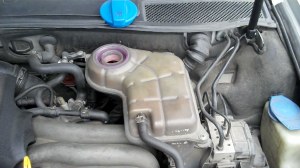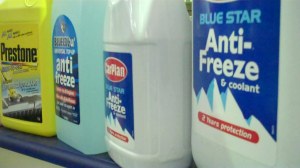The advent of an oil change as opposed to a car service has become popular in recent years resulting in the increase of larger repair issues. Oversight of the antifreeze/coolant concentration levels is a major factor of longer term substantial damage.
Antifreeze or engine coolant, which are now one, are depleted in use and need to be changed every two years to replenish the additives that protect the cooling system from water, which pits the metals and causes rust and corrosion. Additives also prevent foaming and electrolysis. Your vehicles cooling system should have an antifreeze/coolant concentration to water of 50% in Ireland, up to 70% in colder climates and 35% in hotter climates. Older vehicles inevitably have higher friction levels and are susceptible to generating higher temperatures.
Vehicles using Long Life antifreeze, should be changed every 4 years or in and about 80,000 Km.
The importance of antifreeze/coolant.
Alcohol was used in cooling concentrations in the early days and worked well to prevent freezing but achieved nothing in the prevention of corrosion. Chemicals and additives are used in modern solutions to prevent water from both freezing and over heating, particularly in vehicles with air conditioning. The solutions now also give engines protection all year round and do not damage the rubber and plastic components. It also stabilizes the viscosity, preventing thickening and foaming.
Demand for space under the bonnet has exacerbated in the modern vehicle. When coupled with the consistent introduction of higher performance additions and smaller more powerful engines and the necessity of plastic components, the demands of the modern solutions are much more severe. Average engine temperatures run at 140 degrees C so the proper amount and concentration of coolant in your engine is vital to protect it.
Water running over differing metals develops a small electrical charge which will damage and pit engine surfaces and can cause ruthless damage to your car’s engine components. The additives in coolant neutralize this but they are depleted over time.
So how will you know if the coolant level is correct?
It is not as simple as making sure that it is topped up to the max level in the coolant bottle. As models differ it is best to consult the vehicle manual for the correct type and capacity. Conventional coolant which is Glycol based and blue/green in colour can be checked using a hydrometer but a refractometer is needed for the (red/pink) Long life coolant which is a propylene glycol, as it has a specific gravity much closer to water.
With the use of a multimeter it is possible to measure the voltage content. Simply place the earth probe on the negative pole of the battery and place the top of the positive probe in the coolant. A reading above .20 volts is high and damaging, and signifies you need to change your coolant.
Alternatively call to your local mechanical garage and have them check it for you.
*Antifreeze Concentration Chart
| TEMPERATURE c. | ANTIFREEZE/COOLANT CONCENTRATION | WATER CONCENTRATION |
| 32 | 35% | 65% |
| 25 | 33% | 67% |
| 20 | 33% | 67% |
| 15 | 33% | 67% |
| 10 | 33% | 67% |
| 5 | 33% | 67% |
| 0 | 33% | 67% |
| -10 | 39% | 61% |
| -20 | 44% | 56% |
| -30 | 48% | 52% |
| -34 | 50% | 50% |
| -40 | 52% | 48% |
| -50 | 56% | 44% |
| -60 | 59% | 41% |
| -70 | 64% | 36% |
| -84 | 70% | 30% |


In hot climates, the recommendation for 70% coolant is not wise. About 35% antifreeze and 65% distilled water gives maximum heat transfer (cooling) while still giving adequate anticorrosion properties and waterpump lubrication.
Hi Frank and thank you for commenting. It was the antifreeze concentration for the colder climates I had been thinking of. I will correct this. Many thanks